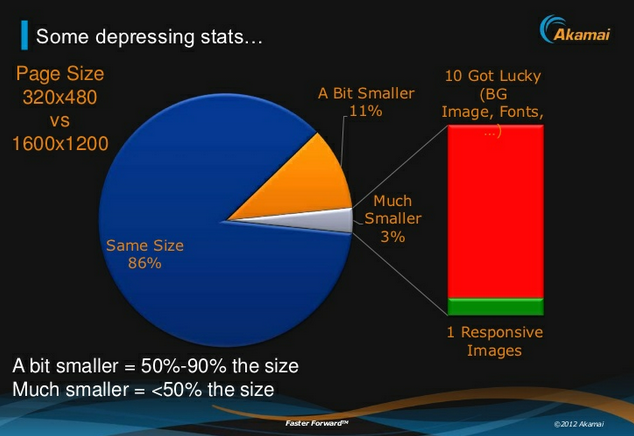Happy New Year, Everyone!
Web performance is something dear to my heart and is something that can make me browse the web for hours.
My favorite holiday treat is @perfplanet‘s performance calender, every year!
- Who doesn’t like to improve things?
- Who doesn’t like to make things more efficient and faster?
- Who doesn’t want Steve, Stoyan or Ilya give us that one last great webperf thought before the year ends?
Today, I’d like to write about a few techniques I’ve read about in the last few months that I consider advanced and experimental in regards to web performance.
That being said, today’s post is not about the common principles on how to make websites faster, posted by Yahoo! several years ago. While those are still valid and should be followed by every web developer and organization on this planet, I want to focus on those not so commonly known principles and techniques on how to enhance the performance of your mobile web app/site (at least the ones that still give me the “awwww – I didn’t know, wow!”). Mostly principles that can be applied to your server or CDN.
Techniques pushed by Google
I love Google’s “Make the Web Faster” site.
I only recently discovered the (experimental) features of mod_pagespeed, the open source Apache HTTP server module that automatically applies web performance best practices. Instead of making web devs do the performance work, let the web server do that job by applying filters that enhance performance.
mod_pagespeed filter: Canonicalize JavaScript
When developing (mobile) websites, developers tend to include commonly used libraries, JQuery being one of the top ones. So, imagine you browse from website A using JQuery to website B also using JQuery. The browser automatically fetches JQuery again from domain B, although it was just requested from domain A. A waste of bandwidth, something seems inefficient here, doesn’t it? So, the great minds from Google came up with a solution to reduce the obvious inefficiency by introducing the canonicalized JavaScript filter: The idea is that you re-use commonly used libraries (e.g. JQuery) on the web by first replacing it with the equivalent library hosted on Google’s CDN and then when browsing e.g website B, use the copy of JQuery that was previously fetched from the shared library (Google’s CDN).
More about that in this blog post or the direct link.
mod_pagespeed filter: Combine JavaScript (Experimental)
Everyone who cares about web performance knows that reducing HTTP requests is one method to enhance performance. How about your web server doing this job for you? It reduces round-trips to the server and also reduces latency issues. The combine_javascript filter concatenates all used JavaScript files on one’s page and replaces it with a single one.
Check out their demo page.
More fun mod_pagespeed filters here.
Delta Delivery
This is a nice one too. I found the idea and presentation at one of the W3C Performance Working Group meetings (excellent presentations).
How often does a web developer change the entire core of their JavaScript framework or libraries? Not that often, right? So on average, one might only add another feature to the JavaScript core files that visitors need to fetch while re-visting the website. The proposed delta technique aims to reduce the size of JavaScript and stylesheets by sending only the difference “between what the client has (in cache or local storage) and the latest version”. The benefit here is that the delta will, most of the time, be smaller than the original source. “Server computes and returns encoded delta between version X and Y which is much smaller than Y itself”.
More information about “Browser Enhancements to Help Improve Page Load Performance Using Delta Delivery”
Others & General
It’s not only Google who tries to be smart about predicting users behaviors and trying to enhance speed performance based on situational conditions.
- Akamai has always been on the forefront of optimization and delivering content. Their situational performance techniques are fun and easy to follow. Aqua ION focuses on front-end optimization.
- Also Cloudflare suggested their own technique called Rocket Loader to combine JavaScript and Stylesheets more efficiently.
- Guy’s situational performance post on perfplanet’s calendar 2012.
And some client-side techniques that I don’t want to forget to mention:
- General JavaScript loading techniques like defer, prefetch and async
- Stoyan’s JavaScript performance patterns
This is by no means everything innovative and great that is out there to make your site faster. I appended “Part 1” to the title of this post because I know I will soon find more great techniques that will be worth mentioned. So please stay tuned.
And of course, feel free to share any other exceptional tricks worth mentioning.

